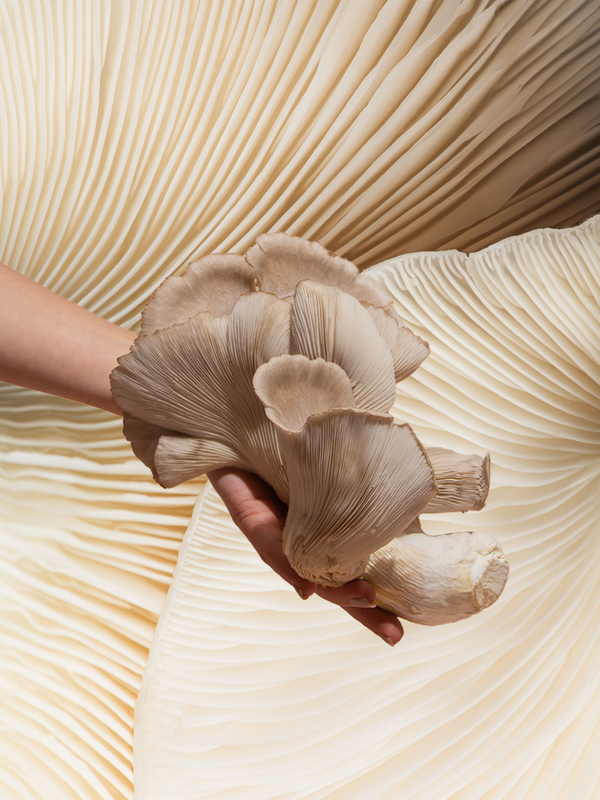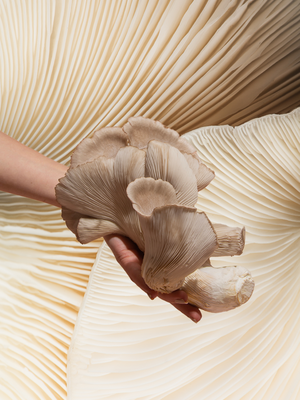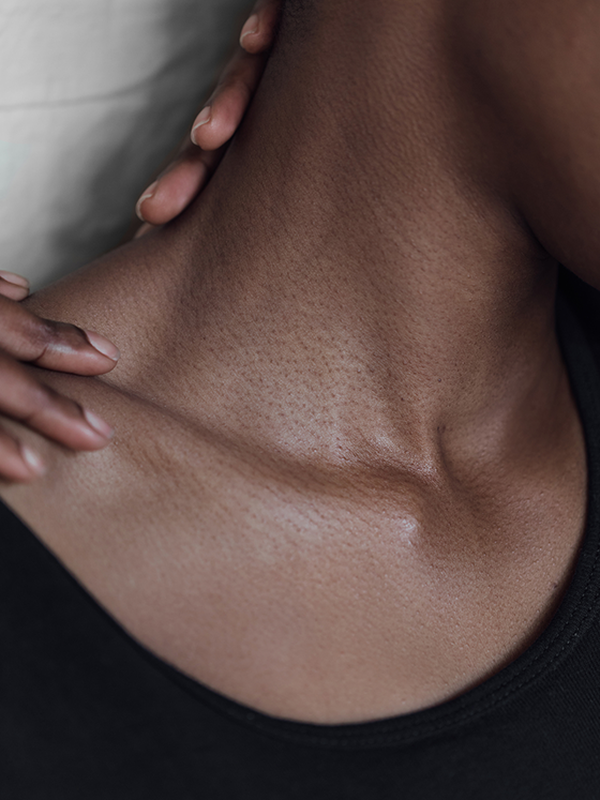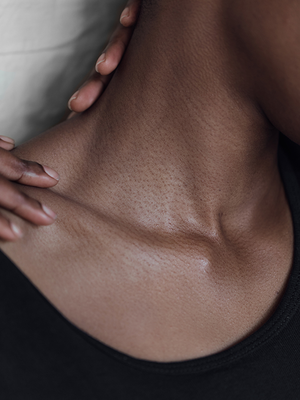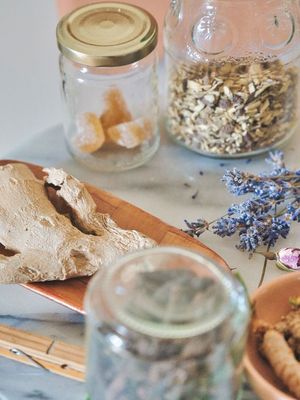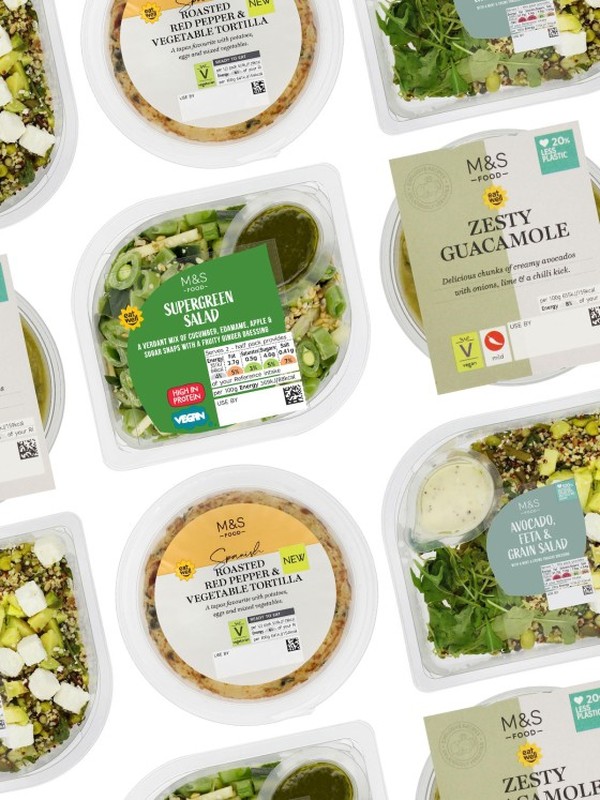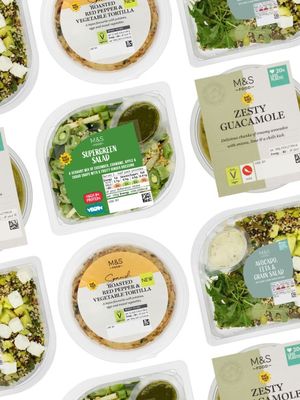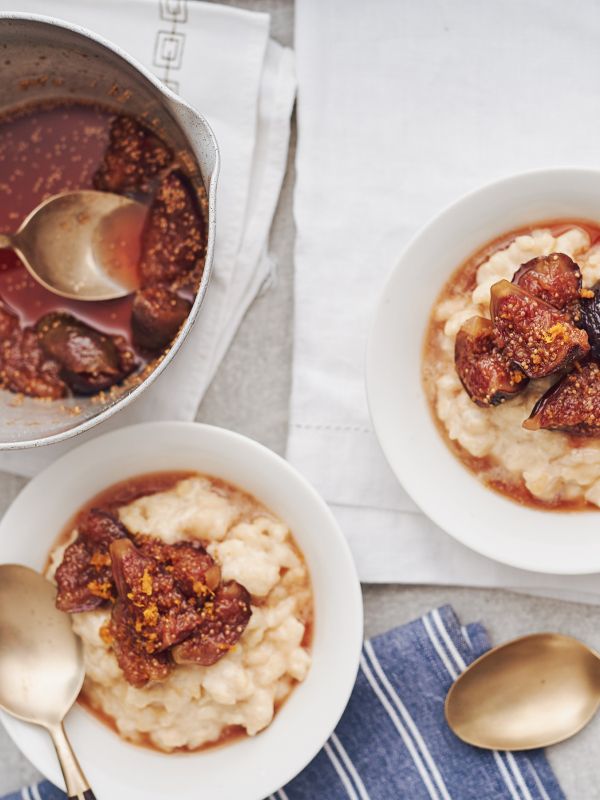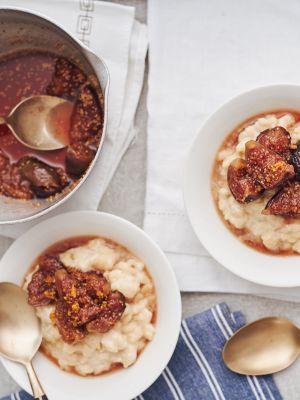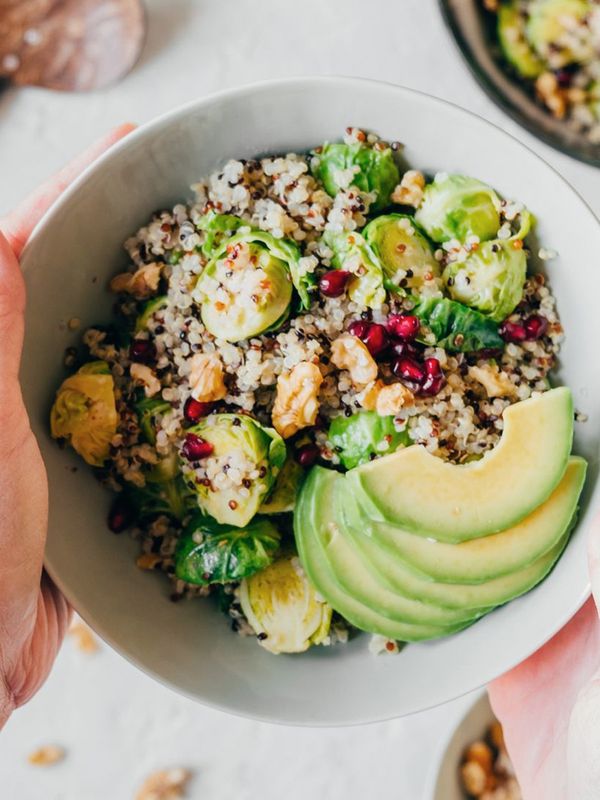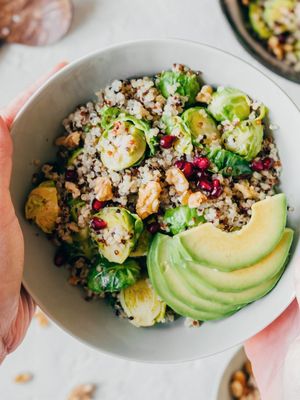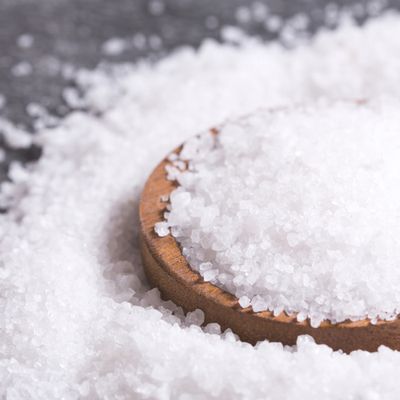
A Guide To Salt
When it comes to cooking, there are five main tastes: salt, sweet, bitter, sour and umami – but the great thing about salt is, it also can alter the flavours of other foods. “Salt has a huge variety of effects on food,” says Nuno Goncalves, Executive Head Chef at Quaglino's. “It’s mainly used as a seasoning to enhance natural flavours, bringing out the sweetness of certain foods if used in small amounts or used to correct bitterness, it also releases certain molecules making foods more aromatic. Salt also plays a big role in preservation, colour enhancement and texture.”
We asked our favourite chefs to give us a lesson in using salt, in moderation…
The Different Types Of Salt
There’s a huge amount of variety when it comes to salt, each giving a different effect. But there are more predominant types of salt that most chefs will use in their cooking…
Table salt: The most common of the salts, table salt is harvested from salt deposits found underground. It’s refined and finely ground down, with impurities removed during this process. This kind of salt is best to use in cooking rather than as a finished salt.
Himalayan pink salt: This is a variety of rock salt mined from the Punjab region of Pakistan and has a pinkish tint due to mineral impurities. “Himalayan pink salt is a pure, high quality salt, and we always use the best ingredients available when creating each dish so it’s a natural fit,” Manish Mehrotra, Corporate Chef at Indian Accent, explains. But it’s also visually appealing, which means it’s perfect for presentation. “I sometimes use a small square block of it in place of a plate – for example, scallops work beautifully presented on Himalayan pink salt,” Manish continues. “They absorb a delicate amount of salt simply from being placed on the block, making for a truly delicious scallop.” Rock salt can also be used within meals too – Santosh Shah, Executive Chef at Baluchi says he uses it for “making stock, cooking fish, and seasoning rice – it is definitely one of the most common salts I use in my kitchen.”
Maldon sea salt: A kitchen simply isn’t a kitchen if it doesn’t contain Maldon sea salt. Maldon salt is what’s known as kosher salt, which means it’s flakier and coarser than normal table salt – this comes in thick flakes in the shape of tiny pyramids, Maldon is pleasing to the touch. It’s best used as a finishing salt and looks particularly pleasing on top of a steak. “Maldon Sea Salt is perfect as a final touch of seasoning on cooked dishes and it can also be smoked to add extra flavour – this is my favourite salt to use,” agrees Santosh.
Fleur De Sel: Translating to ‘flower of salt’ in French, fleur de sel is a sea salt that’s harvested from tidal pools in France. It forms as a thin, delicate crust on the surface of the seawater, which is them skimmed off. It’s a very expensive salt which retains a lot of moisture and has a bluish tint from its high mineral content. Like any sea salt, it’s more unrefined and coarser than regular table salt. Head Chef of Bar Douro, Sean Marsh says he likes to use this as a finishing salt, and can be added to meat, seafood, veggies, or even sweets like caramel.
Kala Namak: This is a kiln-fired rock salt used in South Asia and has a slightly pungent smell. It’s also known as Himalayan black salt. “Kala Namak works best in Indian street food dishes called chaats,” Manish explains. “It has a sulphurous smell, which is quite strange to those unaccustomed to it, but it works perfectly to balance all the sweet, spicy and creamy flavours present in chaat.
The Differences Between The Varieties
Most salts either fall into one of two categories, says Sean: “You either have a finished salt, such as fleur de sel, grey salt, and Maldon, or you have salt for seasoning and curing, like kosher salt or table salt.”
The main difference between salt, Sean continues, comes down to the crystal form and flake size. “This affects how well it dissolves (or doesn't) on food and on our palette, which is why some salts taste ‘saltier’ than others.” And here’s where it gets slightly more complicated: “For more boutique finishing salts, the region and method of production may also maintain trace amounts of calcium, magnesium, zinc or other minerals which can contribute minor flavour differences that distinguish individual salts. This is why fleur de sel from France will taste different from flor de sal from the Algarve.”
The Best Way To Cook With Salt
Salt isn’t just for sprinkling on your chips or seasoning your vegetables – there’s so many different uses for salt that can completely alter the flavour of certain foods. As chef Samin Nosrat says in her hit Netflix show Salt Fat Acid Heat, “[Salt] can make food taste more like itself”.
So, what do chefs like to use salt for the most? “I like to use Maldon sea salt to cure and brine fish as it has an incredibly clean and pure flavour,” says Steve Smith, Executive Chef at Bohemia. “I sometimes use Smoked Maldon salt on oysters or when making pastry, for a more interesting flavour. For everything else, I just use standard table salt.”
Nuno Goncalves uses it to salt bake: “Salt baking is a very effective way of cooking – when salt is combined with egg white and baked, it creates a protective layer enabling the fish or meat to cook in its own juices, producing and incredible aroma and flavour without over-salting.” Nuno also says that he uses salt to bring out the flavours in sweet foods such as caramel or fruits, too – fleur de sel is best for this.
Kim Woodward, Executive Head Chef at 100 Wardour St also likes to use a salt bake – this time for her veggies: “To do this, we basically make a meringue with table salt, covering the vegetables in it – for example, celeriac – wrapping it in foil and baking it in an oven, creating an firm, hard coating of the meringue around. The result is vegetables that are succulent and juicy.”
Sean is also a fan of using salt to cure and preserve a number of foods, such as charcuterie, egg yolks and salt cod (also known as ‘bacalhau’). “Salt also promotes lactic fermentation in pickling/preserving, over time this denatures amino acids in food, altering the flavours and essentially ‘cooking’ over a slow time.”
But there’s also no harm in using salt to enhance even the most basic of meals. Manish says he loves to use sea salt to bake a sweet potato. “I fill the baking tray with salt and place the potatoes on top before roasting them at a low temperature for a couple of hours. The salt helps the potatoes to reabsorb the moisture they lose when baking, keeping them tender and fluffy on the inside and perfectly crisp on the outside.” It doesn’t get much better than that, does it?
When To Add Salt
“This really depends on what you are cooking,” says Nuno. “If I’m cooking duck leg confit then I will cure it/season it before – you have to. If I am cooking vegetables in boiling water then I will also season it before, as this will enable the foods to take on flavour as they cook or preserve/enhance colour which is the case in all greens. The same goes if I am slow cooking – salt will go first.” But when it comes to grilled or seared meats and fish, Nuno will use a finishing salt. “I find it helps retain moisture during the cooking process and the finishing salt gives it the right amount of flavour enhancement.”
The Health Warning
No, it’s not – salt absolutely must be used in moderation. The way many foods are cooked with salt, means the salt isn’t able to permeate the food to a damaging level. For example, when you salt the water for vegetables, the veggies aren’t in the water for too long and most of the salted water goes down the drain – “I always season my water with a good couple of handfuls of salt,” says Kim. But that doesn’t mean that you shouldn’t be conscious of how much salt you’re using when you cook anything.
"High dietary salt is one of the leading causes of high blood pressure, which in turn can increase the risk of developing serious health conditions such as cardiovascular disease and stroke,” Henrietta Norton, leading Harley Street Nutritional Therapist and founder of Wild Nutrition, tells us. “Whilst guidelines suggest an upper limit of 6g (the equivalent of one teaspoon) of salt per day in adults, with the availability and accessibility of processed and packaged foods, it's very easy to exceed this amount.”
Henrietta says cooking from scratch is a great way of monitoring and reducing salt intake, that is otherwise used abundantly and easily disguised in pre-prepared, shop-bought foods. “It's also an opportunity to experiment with, and become accustomed to, new food flavours, for example enjoying herbs and spices instead of salt alone – you'll be surprised how quickly your palette adjusts.”
And while we need to be mindful of our salt intake, it's also important to be remember that salt is also an essential mineral in the body and so we shouldn’t avoid it entirely. “Amongst other roles, it's involved in balancing electrolytes, keeping the body hydrated, and healthy organ functioning."
The Salty Food Alternatives
There are plenty of other products you can use in order to make your food taste salty – anchovies, for example, are a great way to make a sauce saltier.
Brett Redman, co-owner and chef at Jidori, is a big fan of using soy sauce to salt food: “Jidori we use Japanese soy sauce, also known as shoyu. It’s made from roasted wheat and steamed soybeans and is combined with koji, a fermenting agent, which helps the sauce develop a complex flavour. There is literally no end to the versatility of Japanese soy sauce. At Jidori I use it to add flavour to marinades, to form the basis of dressings, and as the primary component of the house tare used to glaze our signature yakitori. Across Japan, shoyu is also used to flavour ramen, add colour to senbei rice crackers, or as an accompaniment to sushi grade sashimi. It is a truly versatile ingredient and the primary salty component in Japanese cooking.”
Nuno also has a few tricks up his sleeve when it comes to avoiding too much salt: “I like to use dried kelp or kombu, but I find apple cider vinegar can also be used as a much healthier alternative to salt on certain foods. I would stay away from salt substitutes such as potassium chloride which can have a metallic taste and not great for you either.”
Recipes To Try

Enzo Oliveri:
Sea Bass in Sea Salt
Ingredients:
1 whole sea bass
1kg of salt
1 lemon
1 stick of thyme
Pinch of pepper
Half litre of water
Method:
1. Put the water into the salt and lay half of the salt in a baking tray.
2. Slice the lemon and put on the salt
3. Gut the seabass and stuff the stomach with a slice of lemon the thyme and pepper.
4. Place the fish so the salt and lemon slices and cover it with slices of lemon and the rest of the salt and ale it for 20/25 minutes depends on the size (300g 400g) at 180-200°C.
5. Take out the oven, break the salt, realise the fish from the salt and lemon, clean from the bones and serve with a little bit of extra virgin olive oil.
Manish Mehrotra:
Grilled Fois Gras with Spicy Pomegranate
Ingredients:
½ tsp of anardana churan powder
90g of foie gras, sliced
½ tsp of crushed black pepper
Large pinch Maldon salt
1 tbsp of fresh pomegranate pearls
Cress (optional), to garnish
Method:
1. Make light gashes on the foie gras on both sides. Sprinkle salt and pepper on it.
2. Heat a non-stick pan. When it is very hot, place the foie gras and sear on both sides till it turns a bit crispy. Sprinkle more salt and pepper on each side.
3. Place the seared foie gras on a platter. Sprinkle powdered anardana churan, fresh pomegranate pearls and Maldon salt on top. Garnish with cress and serve.


Brett Redman:
Tsukune
Ingredients:
For the tare:
100g of chicken wing tips (or any chicken trimmings)
500g of mirin
500g of sake
500ml of soy sauce
100g of Japanese black sugar
2 scallions
1 (1-inch pieces) ginger
1 garlic clove
8 egg yolks
For the skewers:
300g of ground chicken thighs
25g of panko breadcrumbs
3g of kosher salt
4 scallions, finely chopped
3 shiso leaves, finely chopped
8 bamboo skewers soaked in water for 2 hours
Method:
1. Make the tare: Heat a medium saucepan over high heat. Add the chicken and cook, turning as needed, until golden and caramelized, 10 minutes. Add the mirin and sake and cook until thick, 15 to 20 minutes. Add the soy sauce, scallions, ginger, and garlic and cook two minutes more. Add the sugar and cook until dissolved, five more minutes. Strain, discarding solids, and cool the tare completely.
2. Make the skewers: In a medium bowl, mix the chicken, panko, salt, scallions, and shiso. Tradition says to mix it 16 times clockwise then 16 times anti-clockwise to get the right consistency.
3. Divide the meat into eight equal pieces and, using your hands, press the meat around the skewer.
4. Light a grill. Add the skewers to the grill and cook, turning as needed, until almost cooked through, eight to 10 minutes. Brush with the tare and cook until caramelized and done, four minutes longer. Transfer the skewers to a serving platter and keep warm.
5. Divide the egg yolks between eight ramekins. Pour some of the tare over each and allow them to sit for five minutes to cure slightly before serving with the skewers.
Santosh Shah:
Bombay bhel (Mumbai Street Snack)
Ingredients:
1/2 cup of potatoes (boiled, peeled and chopped) optional
1/2 cup of tomatoes (chopped)
1/4 cup of red onion (chopped)
1 green chilli (chopped)
5g of coriander, chopped
1/2 tsp of ground turmeric
1/4 cup of green chutney
1/4 cup of tamarind chutney
1/4 pomegranate seeds
2 cups of puffed rice
1 cup of sev (crunchy noodles)
1 cup of Bombay mix
Indian black kiln-fired rock salt (to taste)

Method:
1. Toss the potatoes, tomatoes, red onion, chilli, turmeric, green chutney and tamarind chutney together.
2. Add the puffed rice, black salt and sev and toss to coat. Serve immediately with extra black salt over the top.

Sean Marsh:
Bacalhau (salt cod)
Ingredients:
100g of fried hair potato
20g of chopped green olives
10g of onion
Pinch chopped garlic
1 egg
Pinch chopped chives
60g of pre-cooked salt cod
20ml of olive oil
Method:
1. Heat deep frying pan till smoking lightly.
2. Add olive oil and onions, fry gently.
3. Add olives, garlic and salt cod and fry.
4. Add potato and stirred egg and fold through gently of the heat to not overcook.
DISCLAIMER: We endeavour to always credit the correct original source of every image we use. If you think a credit may be incorrect, please contact us at info@sheerluxe.com.


